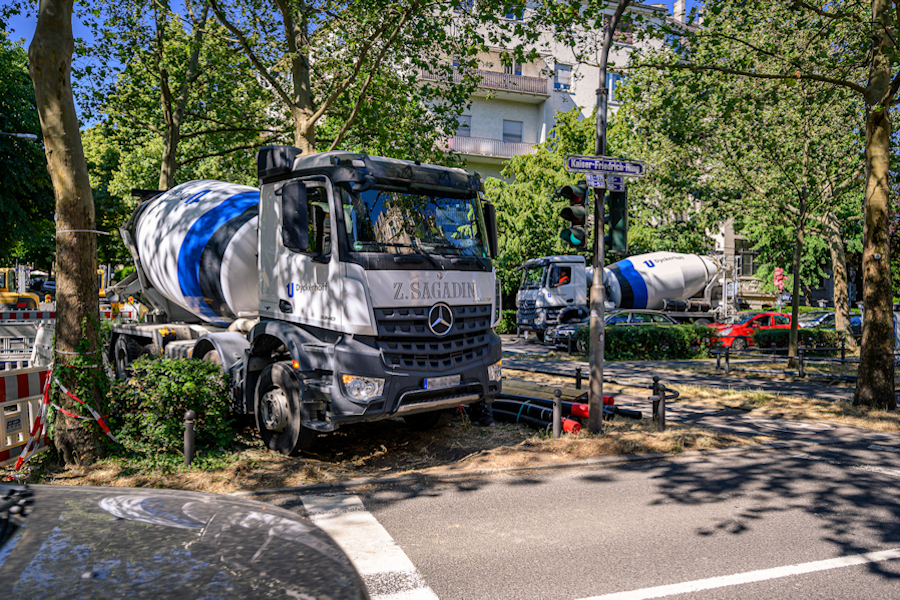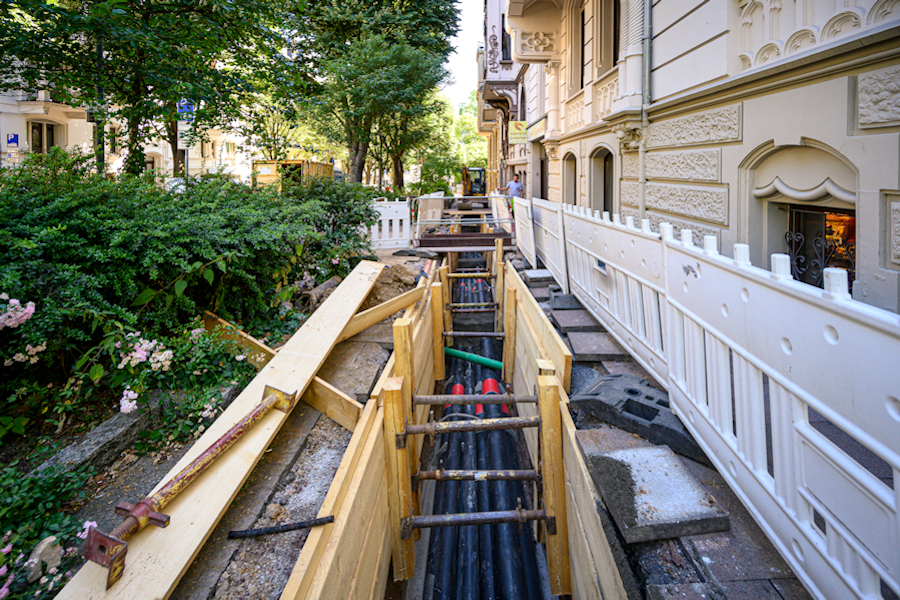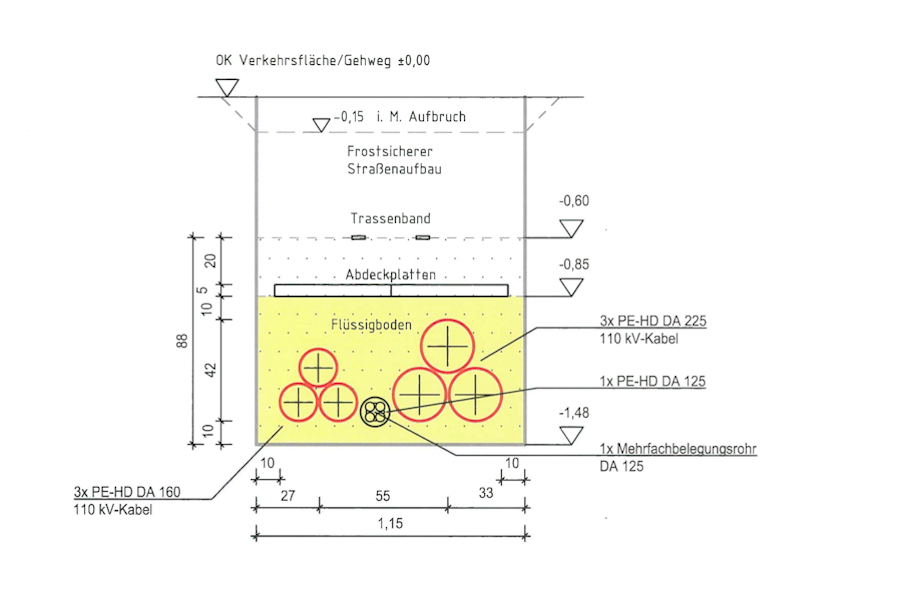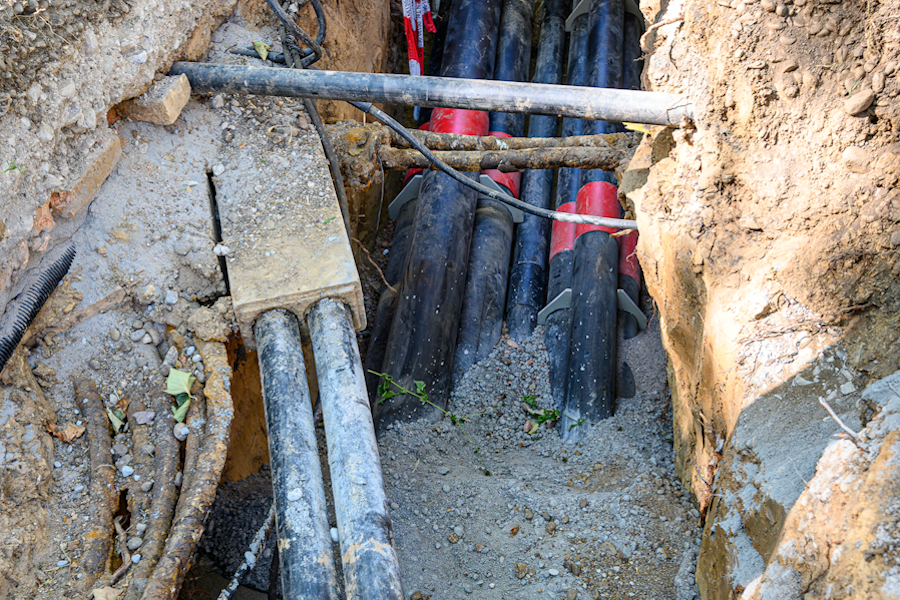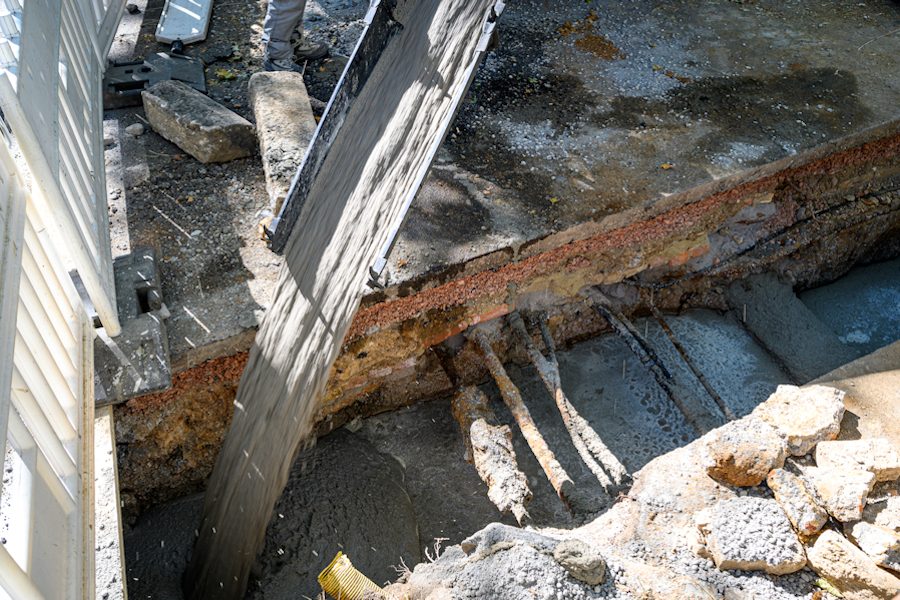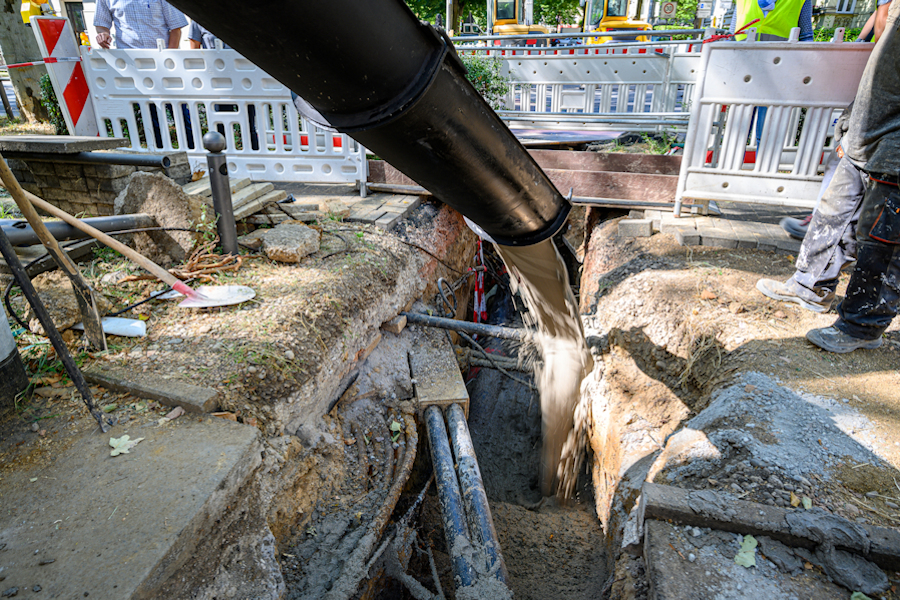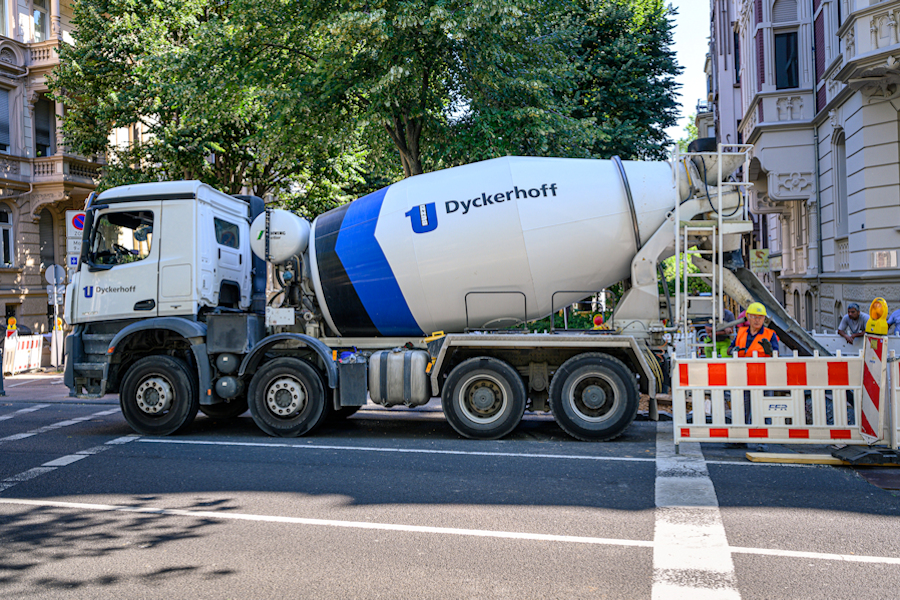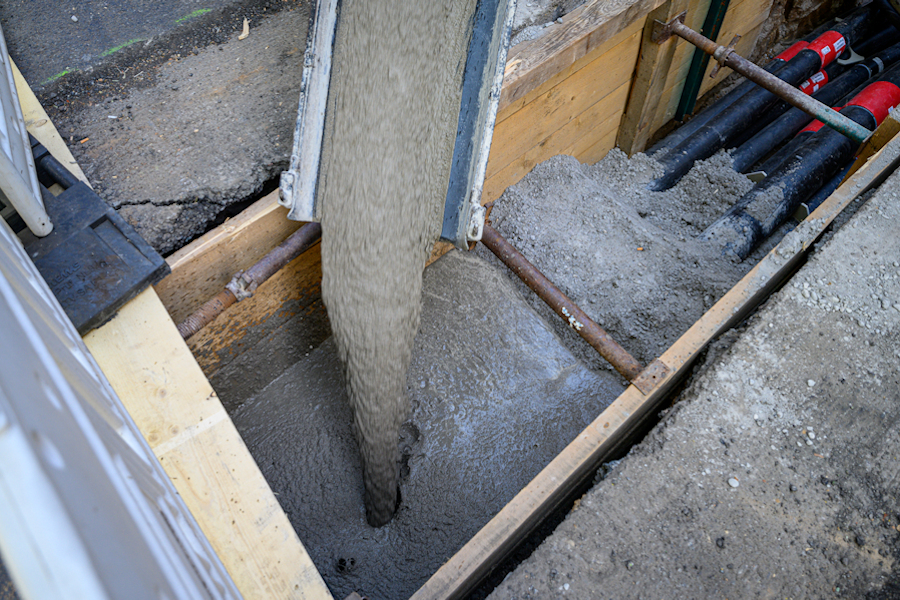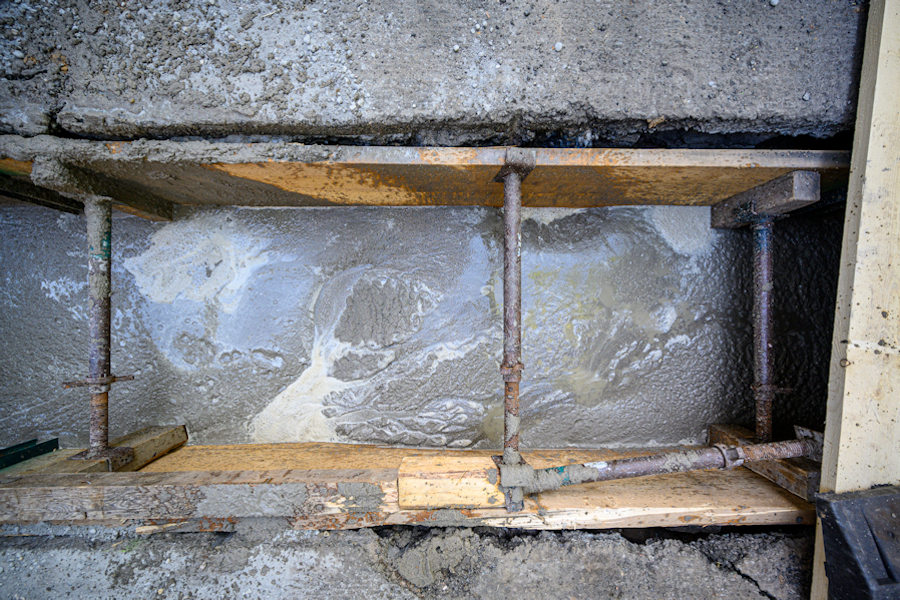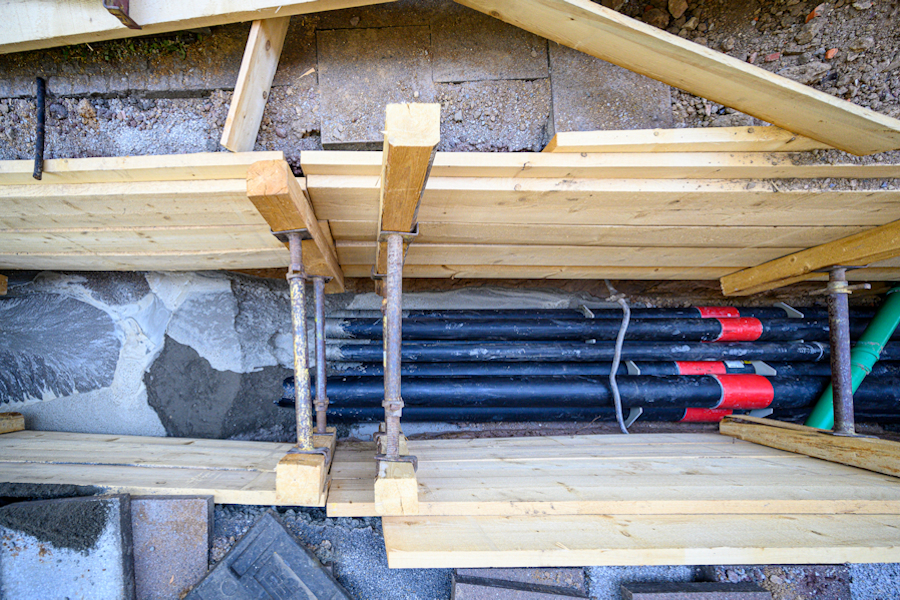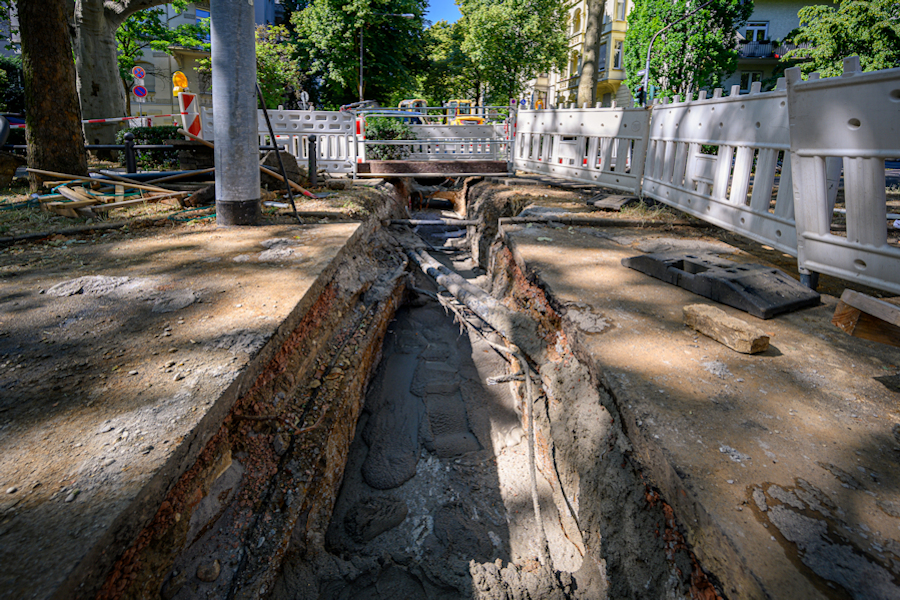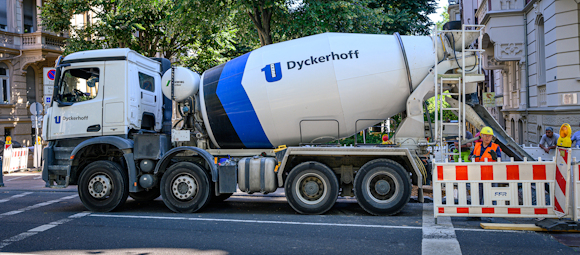
Trenches for Pipes in Wiesbaden Safely Filled – with Dyckerhoff CANADUR
Backfilling materials from the mixer truck are very practical in pipe and sewer construction. This also applies to the laying of power lines – as is currently the case in Wiesbaden
Since June 2019, Stadtwerke Wiesbaden Netz GmbH (sw netz) has been laying pipes for 110,000 volt cables and a control line from Helenenstrasse right through the city centre to the Schierstein district to ensure a reliable power supply for the city area. The contractors are W.K. Kaufmann GmbH from Mainz and Sonntag Baugesellschaft mbH & Co. KG from Bingen.
Dyckerhoff CANADUR – the innovative liquid soil from the mixer truck – was chosen for backfilling the trenches. This has a number of advantages over conventional backfilling materials such as sand or the reuse of overburden: It is self-compacting, flows into every corner of the construction pit and wraps around the pipes like a shell. This means that there is no need of additional compacting with heavy equipment, which is particularly annoying for local residents. Possible consequential damage, e.g. to pipes or adjacent houses, as well as subsequent lowering of the floor are avoided. In addition, depending on requirements, the soil can also be excavated again with light equipment and the production of CANADUR in the concrete plant with constant raw materials ensures consistent product quality.
Another feature of the liquid floor is used for power lines: It has a good thermal conductivity: The heat generated by the electricity is quickly released into the surrounding soil. This means that the pipes in which the power cables are laid can be very close together. The trenches to be excavated can be narrow (less than one meter) and the associated impairments to inner-city traffic are limited.
The challenge in excavating the narrow trenches is to avoid damaging pipes and ducts that already run in this area. For this reason, suction dredgers are used to some extent. The still empty cable conduits are held in position with spacers. After every about five meters retaining benches made from ordinary concrete are installed. They prevent the protective pipes from floating up when the CANADUR is filled. This is inserted in the interstitial area and in the line zone. Thin concrete cover slabs provide protection against accidental damage to the pipes during subsequent excavation work. The yellow line strip additionally indicates the power line. A gravel/chippings layer closes the trench before it is covered with the bearing surface layer (concrete slabs in the area of the pavements or asphalt in the road area).
Seven of the two construction companies' teams always work simultaneously at different locations in the city area. Individual non-contiguous sub-sections are also processed within one construction phase because the backfill material still expands slightly during hardening. This means that 30 to 50 meters of track can be completed every day. Working with CANADUR makes fast construction progress possible, also because the trenches only have to be supported with additional safety measures (trench lining) where they are accessed by people or in the vicinity of roadways.
From June to August 2019, Dyckerhoff's ready-mixed concrete plant in Amöneburg (Rhein-Main-Taunus branch) will supply a total of 3,400 m³ of CANADUR as well as C12/15 grade standard concretes in various consistencies for the uplift protection and the restoration measures following backfilling of the trenches. The cables will be installed after all construction work has been completed.
© Photos: Dyckerhoff / Christoph Mertens; graphic trench structure: sw netz


